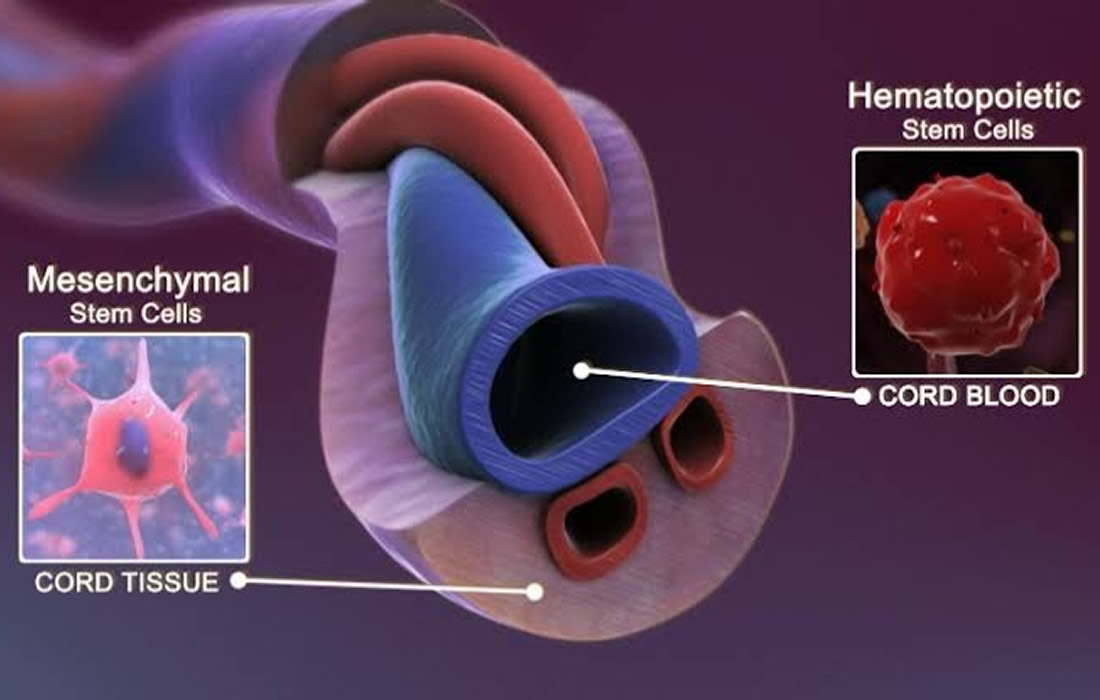Regenerative Medicine News and General Information
Umbilical Cord Stem Cells

Stem cells are currently believed as the next future in medicine, due to their considerable therapeutic and biotechnological benefits in treating significant diseases such as cardiovascular diseases, diabetes and neurodegenerative diseases. Beside the use of stem cells in cell based therapies, stem cells applications are extended to the screening of new drugs and toxins and understanding birth malformation.
Umbilical cord (UC) was previously considered as biological waste, however it has become an accepted source of HSCs like those found in peripheral blood and bone marrow. The UC is formed of two arteries and a vein surrounded by a gelatinous substance called Wharton’s jelly and covered by a simple epithelial layer. Wharton’s jelly protects the blood vessels, prevents them from clumping and provides flexibility to the cord.
Advantages of UC Stem Cells
They possess many advantages over bone marrow stem cells for transplants. First, processing and collection is much easier and simpler, the process takes days to weeks. In contrast, bone marrow stem cells matching, collection and processing take longer time. It can take from weeks to months.
The collection process of cord blood can be done either before or after placental delivery and it is not painful to either mother or child, with a lesser need for stringent antigen typing as well as low risk for transmission of infection.
Bone marrow transplants require the donor to be anesthetized, hospitalized with post-collection discomfort and pain. In addition, bone marrow transplantation and collection of stem cells are more expensive. Importantly, the number of stem cells per unit of volume in UC blood is greater than that found in bone marrow.
Some important known applications of Umbilical Cord Stem Cells are:
- Hematopoietic diseases: they have been widely applied in various hematological diseases including sickle cell anemia, aplastic anemia, thalassemia and leukemias.
- Cardiovascular diseases: they include hypertension, coronary artery disease, stroke, and congestive heart failure. Preclinical studies have shown inhibition of apoptosis of myocardial cells, stimulation of angiogenesis (creation of new blood vessels) and suppressed myocardial inflammation.
- Bone regeneration: they have been used for osteoporosis, congenital malformations, fractures, trauma as well as different types of arthritis. It was demonstrated that MSCs obtained from human UC blood could improve trabecular and bone formation parameters and prevent bone loss.
- Eyesight diseases: is currently being explored to restore the gift of sight to patients, who lost their vision due to various reasons. The regenerative capacity of stem cells makes them an ideal source for the derivation of specialized cells.
- Diabetes: there is a great interest in developing β-cells from stem cells. They were reported to ameliorate insulin resistance in type 2 diabetic rats by suppressing inflammation, inhibition of β-cell apoptosis and restoration of the insulin-secreting function.
- Parkinson’s disease: they were found to possess a greater potential of differentiation into neuron-like cells in vitro compared to bone marrow MSCs.
- Alzheimer’s disease: AD is neuro-progressive characterized by loss of cerebral neurons and synapses. It is now evidenced that diffusible factors released by stem cells are beneficial in improving the survival of degenerating and aged human brain neurons.
Source: Alatyyat, S. M., Alasmari, H. M., Aleid, O. A., Abdel-maksoud, M. S., & Elsherbiny, N. (2020). Umbilical cord stem cells: Background, processing and applications. Tissue and Cell, 65, 101351.

